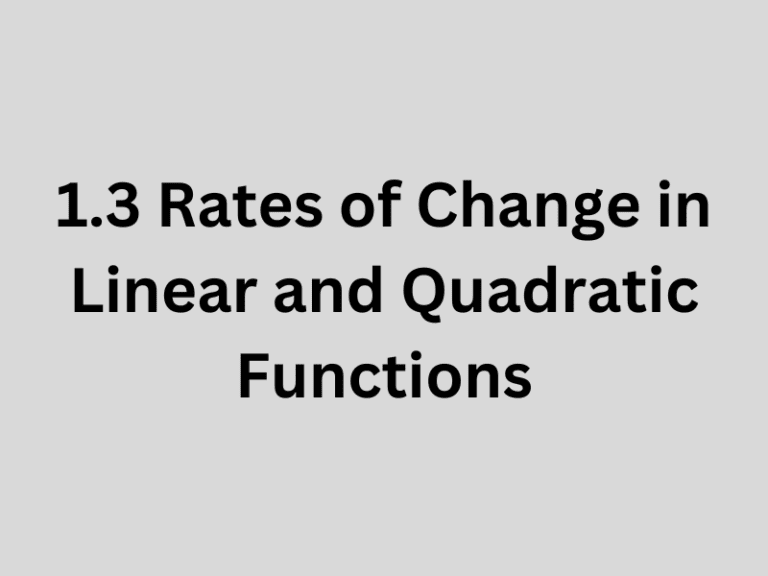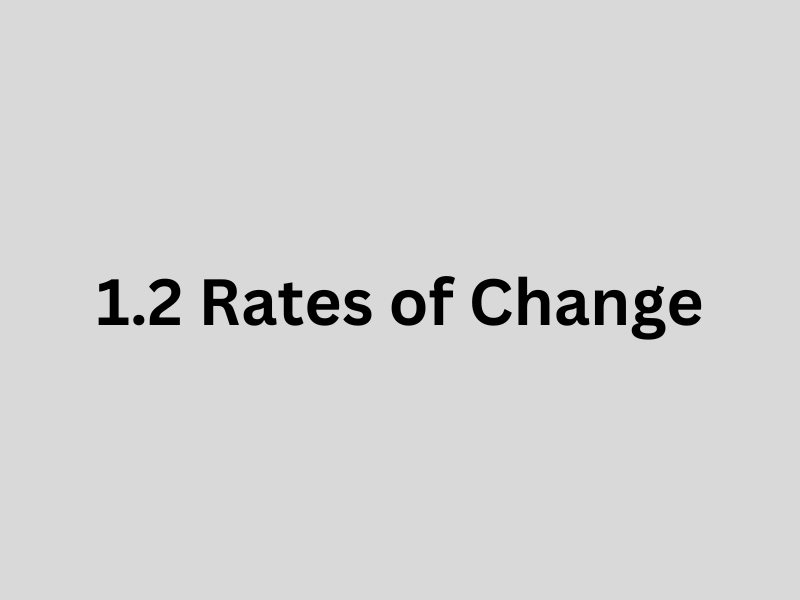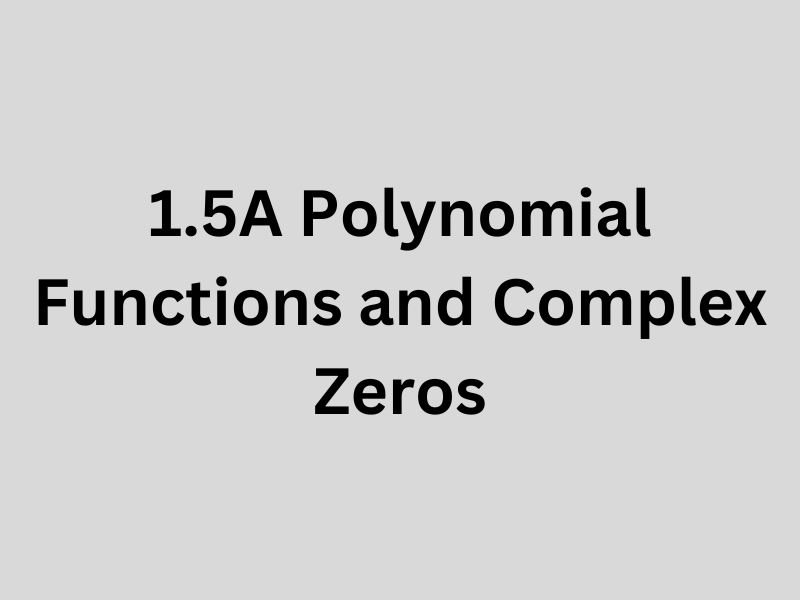Rates of Change in Linear and Quadratic Functions
The rate of change in linear and quadratic functions helps us understand how the output of these functions changes in relation to changes in their input values. Linear functions have a constant rate of change, which is the slope of the line. Quadratic functions have a variable rate of change, showing acceleration or deceleration in the change of the output values.
Examples
Example 1: Linear Function
Function: y = 2x + 3
This linear function has a constant rate of change (slope) of 2. This means for every one unit increase in x, y increases by 2 units.
Example 2: Linear Function
Function: y = -4x + 1
The rate of change (slope) for this linear function is -4. For every one unit increase in x, y decreases by 4 units, indicating a downward slope.
Example 3: Quadratic Function
Function: y = x^2
The rate of change for this quadratic function varies with x. As x increases or decreases from 0, the rate of change increases, indicating the parabola's widening.
Example 4: Quadratic Function
Function: y = -x^2 + 4
This quadratic function opens downward (because of the negative coefficient of x^2), and its rate of change shows deceleration as x moves away from the vertex at (0, 4).
Example 5: Linear Function in a Real-World Context
Equation: y = 50x
If y represents the total cost of buying x apples at a constant price of $50 per apple, the rate of change, or slope, is 50. This indicates that the cost (output) increases by $50 for every additional apple (input) purchased.
Packet
| Practice Solutions
| Corrective Assignments
| ||||||||






